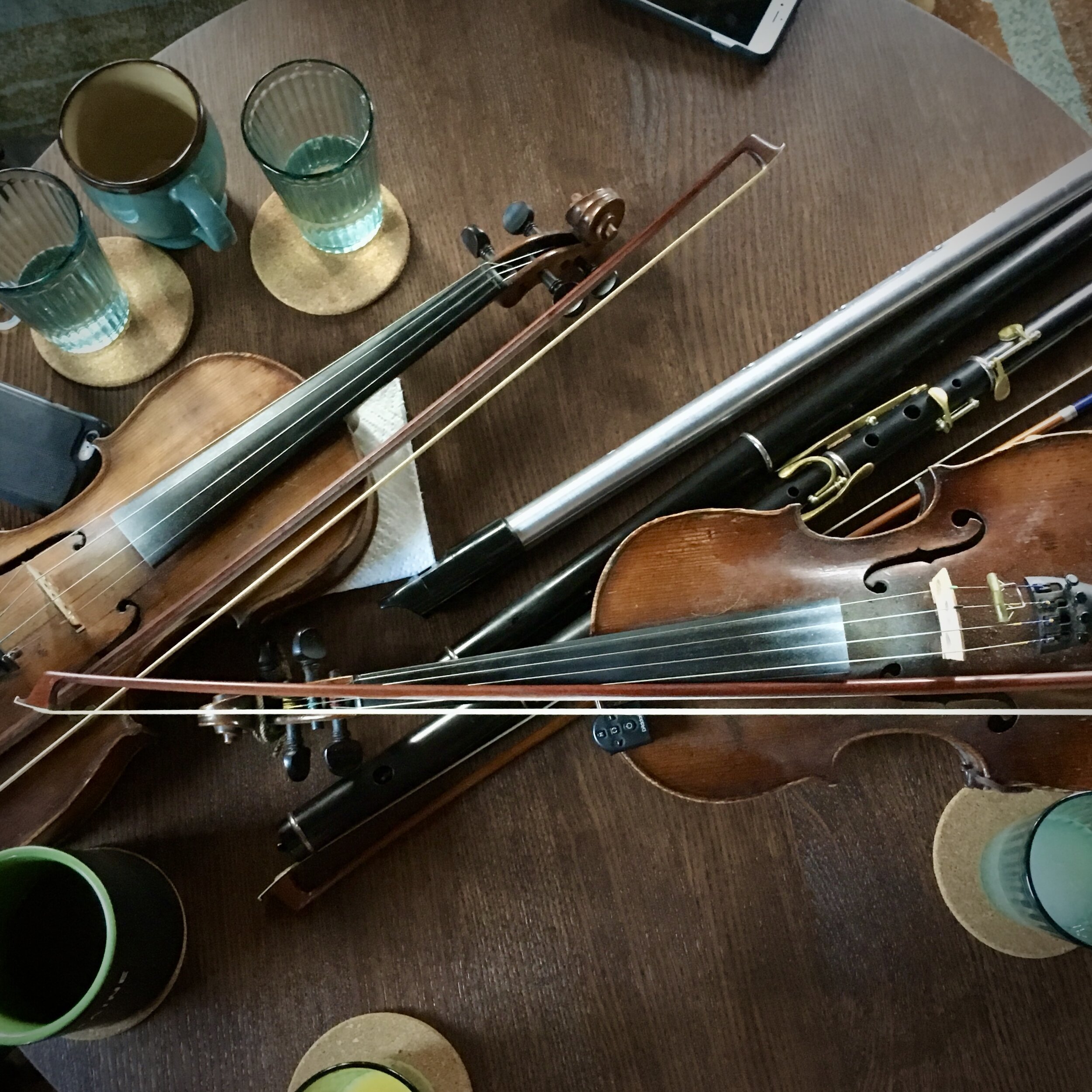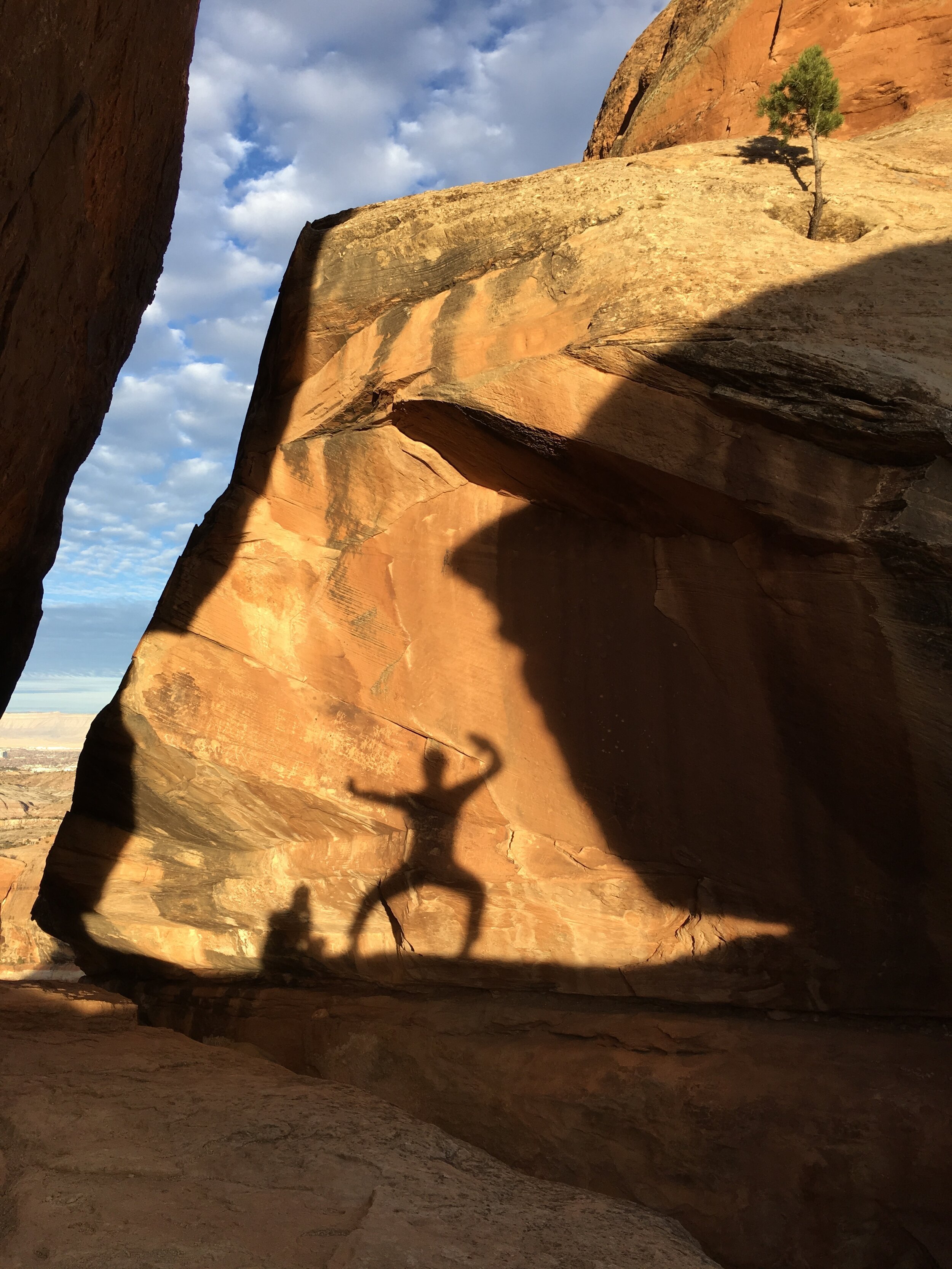ethnography
Original work from an ethnographic research trip to Ireland on behalf of Cultural Roadmapp Audio Tours. All interviews, recording, photography, audio editing, photo editing, and writing by Leslie Anne Harrison.
Visit KGNU’s Seolta Gael to listen to an interview with Leslie about her research and trip. Her interview begins about 19 minutes into the show.
You can also listen to Leslie’s guest appearance on Us, Animals & Our Musics, an episode of the Liffey Sound 96.4 FM Podcast hosted by Martin Downes from Maynooth, Ireland. Leslie’s portion begins about 25 minutes into the episode.




























































Dún Briste, County Mayo, Ireland
D.M. shares his experience landing on top of Dún Briste, a towering sea stack off the northern coast of County Mayo. Separated from the mainland in the 1300s, his scientific team was the first to stand on top of the stack in 600 years.
Rock climber I.M. tells the story of ascending Dún Briste and the quick thinking he needed to survive the climb. He is one of just seven people to stand on the stack since the 1300s.



Mullaghmore Head, County Sligo, Ireland
B.E. describes big wave surfing at Mullaghmore Head and the gender discrimination and media representations that women are dismantling within the sport.


Connemara, County Galway, Ireland
H.L. discusses the mass exodus of the Irish following The Great Famine, the power of poetry to address a troubled history, and how difficult memories encourage greater kindness towards strangers.
K.M speaks about bodhrán making, the characteristics of the instrument, and the personal aspects of being an instrument maker in Connemara.





Ballina, County Mayo, Ireland
G.E. remembers a beloved local historian who collected 100,000 items over the course of his lifetime and left a lasting legacy in Mayo.




Tír Sáile, The North Mayo Sculpture Trail, County Mayo, Ireland
O.M. explains her decision to choose an unacknowledged graveyard as one of the sites for the North Mayo Sculpture Trail. Her sculpture and the ensuing publicity sparked reactions from the Catholic Church over unacknowledged burial grounds.




Galway Gaeltacht, County Galway, Ireland
O.P. provides background on the Irish language, the Gaeltacht regions of Ireland, and the civil rights movement that led to the creation of Údarás na Gaeltachta.




Clew Bay, County Mayo, Ireland
H.B. shares her favorite tales of the woman who once ruled Clew Bay, Pirate Queen Grace O'Malley.



Along the Wild Atlantic Way
Published in the February 2018 issue of The Celtic Connection.
This past fall I was asked to spend five weeks in Ireland researching future audio tours for Cultural Roadmapp. Needless to say, I leapt at the chance. I was to be one of three researchers interviewing eighty-four people along the entire length of the Wild Atlantic Way, a driving route on Ireland’s west coast encompassing 1,500 miles from Cork to Donegal. I was off to find stories that couldn’t be Googled.
"Here’s your car," they said. "Good luck," they said. And then there I was, keys clutched in one hand, suitcase in the other, trying to remember that vehicles in Ireland drive on the left.
Left, Leslie, LEFT, I muttered to myself as I embarked on a five-week journey in which I would drive 1,300 miles, visit eleven counties, stay in ten AirBnBs and one haunted hostel, climb three mountains, consume far too many Hobnobs, and record more than forty hours of interviews with twenty-nine incredible people. And although I was mostly traveling solo, often without working phone or internet, I would rarely feel alone.
•••••
Sitting with probably the best female surfer in Ireland, I am in awe. She is warm, kind, articulate, and blazingly intelligent. I am also trying to wrap my head around the idea that the person sitting in front of me willingly surfs thirty foot waves. "It must seem like an absolute insanity," she laughs, describing Mullaghmore Head, "we’re one of the few groups of people who get excited by bad weather and storms, gale force winds, probably hailstones. That’s when we know Mullaghmore might be waking up." Standing on a surfboard since she was four years old, she seems unfazed by the idea of surfing a mountain of water through a barrage of hailstones. So much so that she surfs around the world, is one of the first women to ever surf in Iran, and works to promote gender equality in the sport. She gathers me into a hug in parting, and I leave with the certain knowledge that I’ve been in the presence of a truly extraordinary person.
In Mayo one morning, I sit on an old wall by the sea, watching the sun rise upon Croagh Patrick, an ancient and revered pilgrimage site famously hiked by as many as 30,000 pilgrims every Reek Sunday. As daylight illuminates its imposing height and treacherously steep sides, I wonder at anyone ever making it to the top. Later that day, I meet a young man from the Order of Malta who recently ran up the mountain on Reek Sunday, carrying a portable defibrillator to a pilgrim in cardiac arrest. "You ran up the mountain with a defibrillator?" I ask in astonishment, remembering the dramatic sight I’d seen that morning. (I will also ask this question repeatedly, with increasing incredulity, as I slip and struggle up the mountain later that afternoon.) "Oh, we spread out and each ran ten meters with it," he replies modestly, "and we got word later that evening that he was sitting up in bed, eating toast."
In a small town I’ve never heard of in northern Donegal, my host, a stranger I’ve known for ten minutes, plunks a stack of books onto the table in front of me. "You’re here to learn about Donegal, you’ll want to read these," he tells me, nodding seriously. I eyeball the books dubiously. I’m only staying for two days. "There’s a collection of Donegal folk tales upstairs in your room. You’ll want to read those too," he adds, balancing more books and a sheaf of papers onto the stack. "I could also tell you a story that’s been passed down for generations. It’s a thousand years old." And so begins the sharing of stories about life and Donegal, complete with mysterious sea caves, companionable seals, and cackling characters. Strangers become friends and two days pass peacefully into three. "You should come back next year," he tells me at the end of my third day, "and bring your husband too. He’d love it here."
In southern Ireland, I see a pair of eyeglasses recovered from a shipwreck. I had been to the Lusitania Memorial Garden the day before; I thought I had understood the sorrow of 1,198 souls lost in the 1915 sinking. I hadn’t. The glasses I’m staring at look just like my husband’s, and I suddenly see him onboard the Lusitania. I see the kindness, humour, and light that he brings to every day and I see a torpedo churning towards him. The heartrending loss of the Lusitania, the terror of war and destruction, become visceral in this moment. Someone is speaking to me, but I can’t hear what they’re saying. I am riveted by the glasses in front of me. This was someone’s Fred, I think, speechless with grief and horror.
I am out of breath. I’ve been scurrying after two men on an excavation site in northern Mayo, recorder at arm’s length so as not to miss a word they are shouting back at me. Suddenly, the father and son duo stops and looks west. "Rain," the father says succinctly, gesturing towards an ominous cloud with his chin, "run!" So I do, fortunately remembering to leap over the trench for cutting peat, tripping and stumbling through the field, nimbly outrun by a man forty years my senior. I tumble into the car seconds before the downpour starts, at which point the father guns the engine and drives us backwards down the entire hill. "No space to turn around," his son says matter-of-factly, grass whipping against the car as we hurtle backwards. "I always forget where that tractor is," his father comments. Tractor? I think to myself, then seconds later, Tractor! as he deftly rushes past the machinery parked on the side of the hill. Later that afternoon, the father and I are drinking tea at Céide Fields Visitor Centre, a site in existence due to the incredible energy I’ve been witness to all day, when a stranger comes up and shakes his hand. "Thank you," the man says, "for your dedication to archaeology. For everything you’ve done for Mayo. Thank you."
"Yes!" Leah and I fist pump simultaneously. We are test driving Cultural Roadmapp’s first audio tour app, Ireland’s Wild Atlantic Way: County Clare. The GPS-enabled app has just started playing at the exact location it was meant to. "Yes!" we say again, listening as the voices of people from County Clare fill the tiny car and begin telling us their stories about Lisdoonvarna, Kilfenora, Doolin, and the Cliffs of Moher. I look at Leah. This is her hard work we’re listening to, her devotion to sharing people’s stories, her conscientious and dedicated mind. Over four years, she and Deb have worked, researched, recorded, and written an audio tour for County Clare. This is amazing, I think, as she whips us around a sharp turn. "Oogh," I groan then, closing my eyes. After living in Ireland for seven years, Leah does not share my trepidation for driving on the left. "Carsick?" she asks sympathetically, whizzing around another bend. "Let’s go for a hike," she suggests. And the day ends as the two of us began all those years ago, talking for hours in a beautiful place.
•••••
Five weeks raced by and before I knew it, I was sitting in Dublin Airport waiting for a flight home. My now filthy hiking boots were resting on top of a suitcase crammed with dirty laundry, tea, and Hobnobs. I’d met rock climbers, historians, professors, musicians, painters, poets, surfers, scientists, architects, lighthouse keepers, divers, writers, actors, teachers, and instrument makers. I’d sent thank you notes to this incredible cast of people, but it didn’t feel like enough. So I held each of them in my heart and mind for a moment, sending them mental gratitude for showing me their extraordinary stories, for meeting me with warmth and kindness, for making Ireland feel like home. Then I extracted a Hobnob from my suitcase and sat by the window, watching the planes land. You’re so lucky, I silently called to the visitors just arriving, your trip to Ireland is just beginning!
Leslie Anne Harrison lived in Ireland from 2009 to 2011 and now makes her home in Rhode Island. You can learn more about her various projects at www.leslieanneharrison.com.
Visit Cultural Roadmapp to read about the company, to download the audio tour of County Clare, or to contribute to the production of future tours.
writing
Articles and news stories, sample book chapters, e-books, essays, SEO articles, and web copy by Leslie Anne Harrison.
Articles and News Stories:
“Amplifying Black Voices and Culture”
“Female Leadership and Entrepreneurship”
“PCD Alumni Find Success Living Abroad”
“PCD Alumni Working in Healthcare”
“Physics Labs with Mr. Schwartz”
“Senior Projects Tackle Diverse Ideas and Interests”
Book Chapters:
Playing Outside the Lines, Volume I, Chapter 6
E-Books:
10 Tips for Mental Well-Being During COVID-19
Essays:
SEO Articles:
“How PCD Approaches Student Leadership”
“Independent School Accreditation”
Web Copy:
travel photography
Original photography by Leslie Anne Harrison, taken in the United Kingdom, Ireland, France, Idaho, Utah, Colorado, Maine, and Rhode Island. Additional photography in ethnography section.















































































